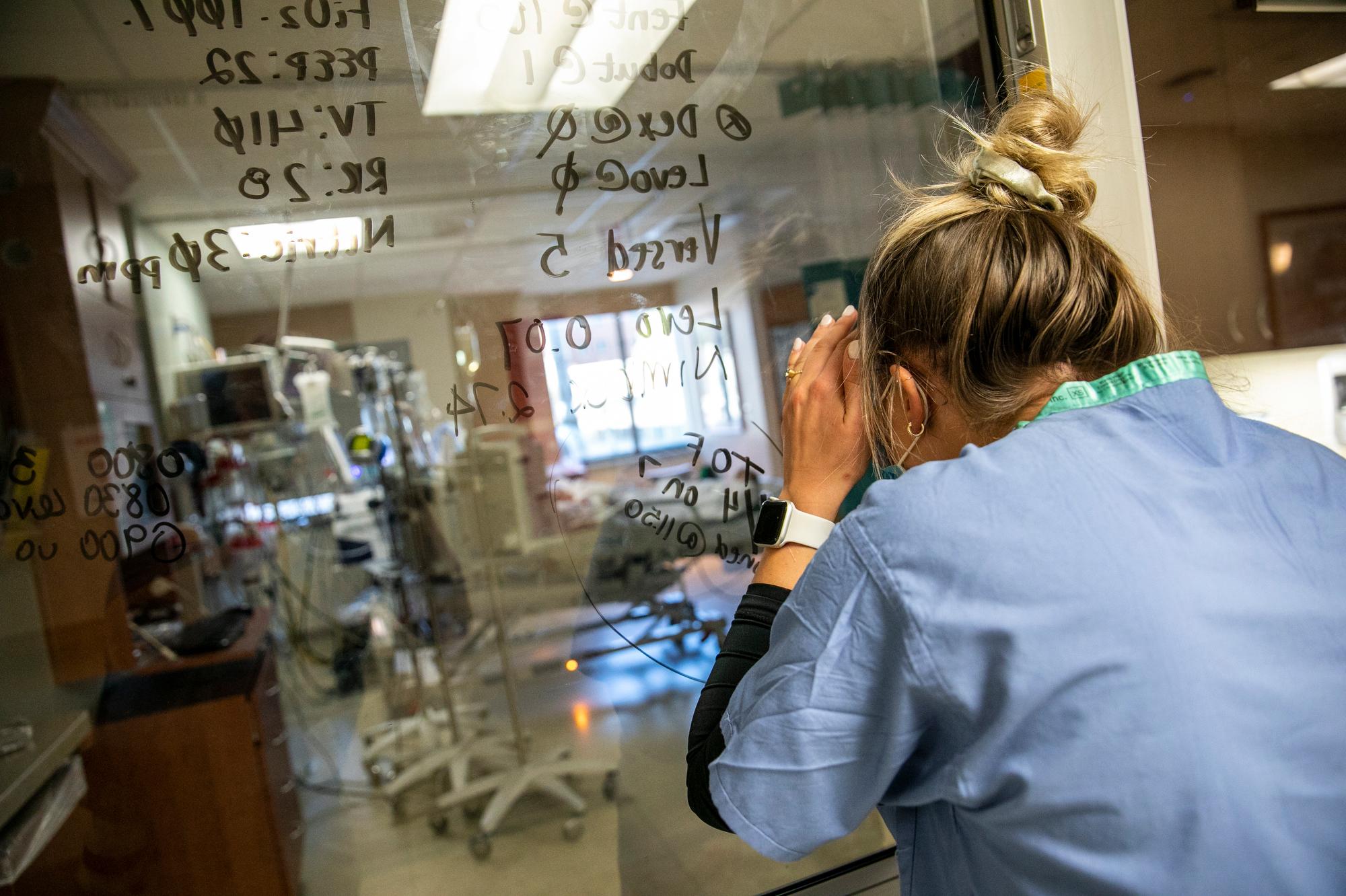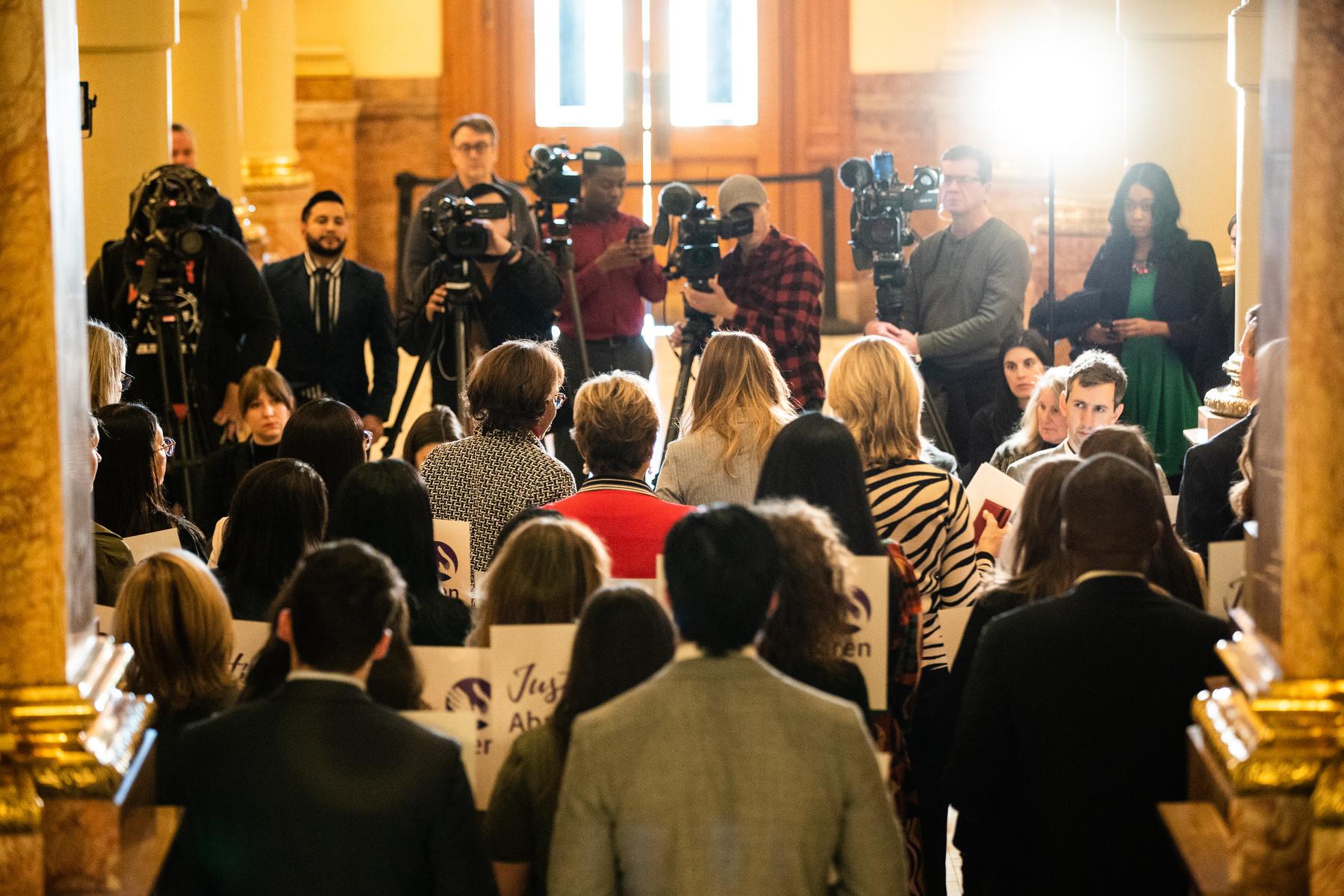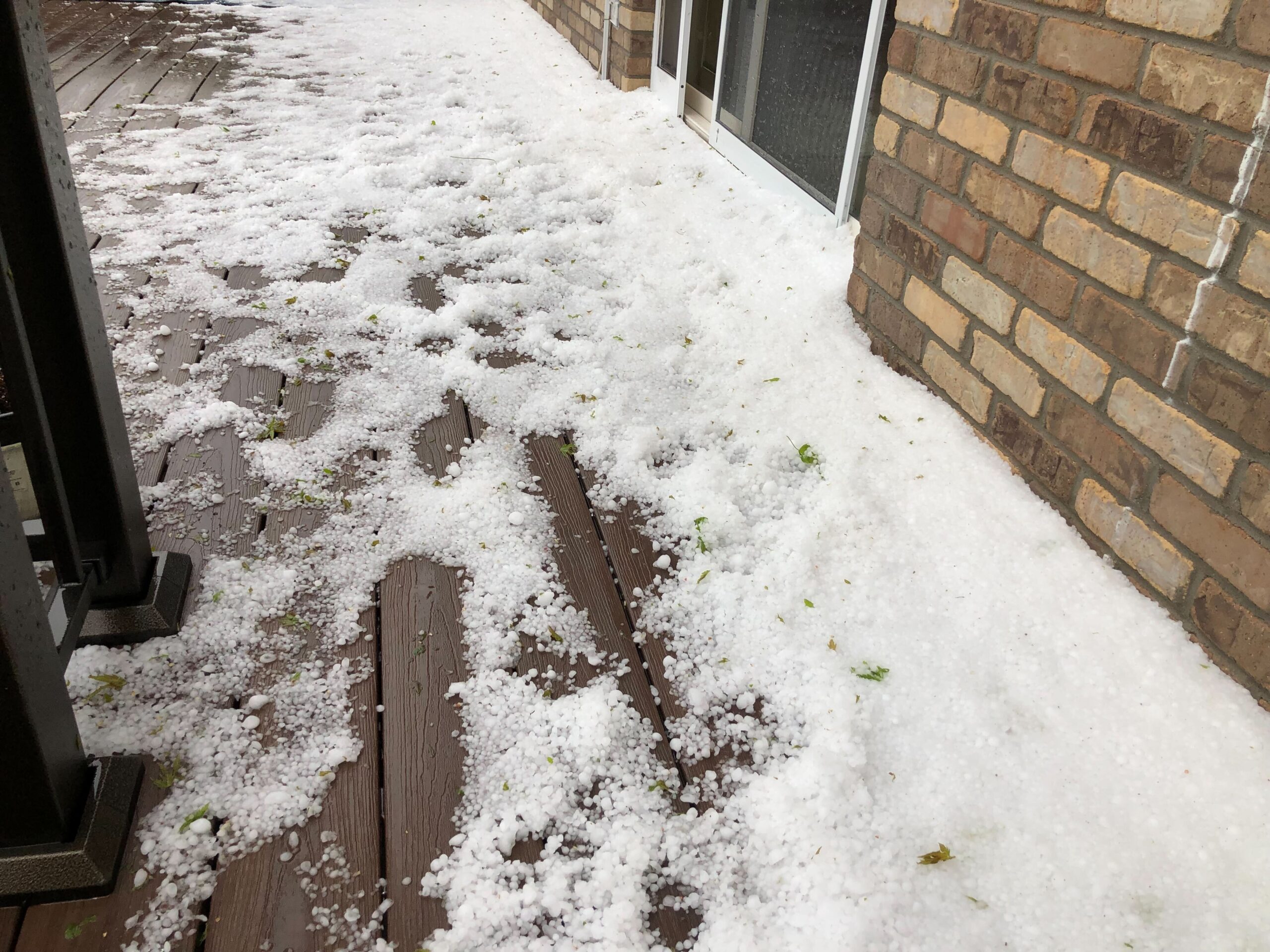
As of March 22, 2023, 15,007 Coloradans have now died in the coronavirus pandemic.
Colorado's first COVID-19 death was an El Paso County woman in her 80s who died in a Colorado Springs hospital on March 13, 2020.
Since then, the pandemic has claimed enough people to fill Red Rocks Amphitheatre one and a half times.
“Fifteen thousand deaths is just terrible and it kind of forces us to reflect on what's happened,” said Dr. Anuj Mehta, a pulmonary care physician at Denver Health, and member of the Colorado Vaccine Equity Taskforce.
Reaching this milestone puts other changes in perspective.
“COVID has done so much more than just killed people. It's impacted people's lives,” Mehta said. That includes children who lost a parent or grandparent, those suffering from long COVID and the other social and economic ripple effects of a global pandemic.
The 15,000 death mark is a loss of historic proportions, costing more lives than anything that’s happened in Colorado in 100 years. The magnitude of that is clearly seen in life expectancy rates in Colorado as the pandemic trimmed years off that bedrock measure of population health.
More often than not those who died were older and men. The virus devastated the Latino community perhaps more than any other ethnic group. It hit counties like Pueblo, Adams and El Paso harder than others.
Vaccination rates and other factors like comorbidities also are thought to have driven the broader trends. More than seven out of 10 of all Coloradans got vaccinated with at least two COVID-19 vaccine doses. That, along with improved treatments and care, undoubtedly mitigated the pandemic’s reach.
“It doesn't take away from those that we lost for sure,” said Dr. Michelle Barron, an infectious disease expert at UCHealth. “But it could have been so much worse if we didn't have the tools that we had.”
Information about the deaths and other impacts caused by COVID-19, including from the state’s COVID-19 dashboard, posted by the Colorado Department of Health and Environment, reveals some telling details about the lives lost.
More Coloradans have died due to COVID-19 than any historic event in the last century
The number of Coloradans who have died from COVID-19 is more than those killed in U.S. wars in the last century, and the 1918 influenza pandemic, combined.
The earlier pandemic claimed more than 7,500 lives at a time when the state’s population was much smaller, nearly a million people.
So on a per capita basis the earlier pandemic caused a far greater relative loss of life, since the state now has nearly 6 million residents, according to the U.S. Census.
Colorado became a state in 1876, so it was not yet a state when the Civil War occurred in the prior decade.
COVID-19 devastated Colorado’s oldest generation
Of the people who have died from COVID-19, around 14,000, the vast majority, were older than 50. The virus rocked the state’s oldest population, with more than 4,200 people over 85 years old falling to the disease.
And the number surely could have been higher, health experts say, if not for older Coloradans getting the vaccine at a high rate.
Virtually everyone in Colorado older than 65 — 99.9 percent — has completed the two-dose primary vaccine series.
But that number lags when it comes to the additional dose targeting the omicron variant, which became available in the fall of 2022. Slightly less than half of those older than 65 have received that booster dose.
According to CDC, advancing age is one of the most consistent risk factors for severe COVID-19 outcomes. Adults 85 years and older are 15 times more likely to be hospitalized with COVID and 350 times more likely to die of the disease compared to adults aged 18-29 years.
El Paso County lost the most people, but among large counties, Adams and Pueblo counties saw higher death rates
Not surprisingly, the bulk of the Coloradans who lost their lives to the virus lived in more urban areas, along the Front Range. But some counties did much worse than others, according to the state dashboard and other available data.
Studies, conducted both nationally and internationally, consistently find locations with higher rates of vaccination have lower rates of death from COVID, according to the state health department.
El Paso County lost more lives to COVID than any other, more than 2,200. That is more than 15 percent of the total deaths, greater than that county’s share of the state’s population.
Adams, Jefferson, Arapahoe and Denver counties all documented more than a thousand deaths.
Another group of large Front Range counties all recorded more than 650 deaths: Pueblo, Larimer, Boulder, Mesa, Douglas and Weld.
Pueblo and Adams had by far the highest death rates, among the state’s largest counties, according to the NYTimes.
Pueblo County’s rate was 411 per 100,000 residents based on age-adjusted COVID-19 death rates. It had the lowest vaccination rate among the ten biggest Colorado counties.
The second highest death rate among those counties was in Adams County, with 332 per 100,000 residents.
The state’s age-adjusted COVID-19 death rate was 240 per 100,000K residents. Of the 15 counties with more than 55,000 people, Eagle County had the lowest death rate of 72 per 100,000 residents. Of that group, Eagle is the most vaccinated county with 91 percent of its 18+ population fully vaccinated, well above the state’s 81 percent average, according to the state health department.
Boulder County also had a relatively lower death rate at 132 per 100,000, as well as higher two-dose vaccination rate at 85 percent. The same was true for Broomfield County with a death rate of 176 per 100,000 and 88 percent of its population older than 18 fully vaccinated with two doses.
More than 30 counties, many medium or small-sized, suffered fewer than 200 lives lost to the virus.
Nearly 20 counties, mostly sparsely populated, many on the Eastern Plains, did not record a single COVID-19 death.
Colorado’s Latino community was hit disproportionately hard
Coronavirus was the top cause of death among Hispanics, as well as non-Hispanic Native Hawaiian, Other Pacific Islanders and American Indian/Native Alaskans, according to state life expectancy data released in 2022.
“COVID mortality is really a reflection of underlying disparities in health,” said Dr. Rocio Pereira. She directs the Office of Health Equity at Denver Health. “It's not a surprise really that we're seeing these numbers.”
Two counties with large Hispanic populations, Pueblo (44 percent Hispanic, according to the U.S Census), and Adams (42 percent) had by far the highest death rates among the state’s large counties.
The relatively low vaccination rate for Hispanic Coloradans is helping to drive the trend, according to Julissa Soto, an independent health equity consultant, who works with nonprofits in Colorado and nationally.
CDPHE reports almost 50 percent of Colorado Hispanics have had at least one COVID-19 dose. That compares with 86 percent of non-Hispanic whites.
“The pandemic emergency is fading out for some, but the emergency in health access for Latinos remains,” Soto said. “Much more needs to be done to address health inequity in Colorado.”
This population often has less access to basic health care, said Pereira, like a primary care doctor, where they can discuss and get access to vaccines. Many live in multigenerational housing.
“This population also has high exposure to the virus,” she said. “They work in service industries where they are more likely to be interacting with people. They didn't have the luxury of working from home or taking time off.”
They have higher comorbidities, the condition of having two or more diseases at the same time, Pereira said, things like obesity, diabetes and lung disease. That’s made them more vulnerable to COVID-19.
The state’s data on COVID-19 deaths by race and ethnicity, according to CDC provisional data, have been wildly inconsistent in recent weeks. Last month, a graph on the state’s website showed that 4,600 of the total deaths were Hispanic. That’s almost 26 percent of the state’s total deaths, more than that demographic’s 22 percent share of the state population.
In mid-March, the same graph had changed to show Hispanics making up far fewer deaths at 3,445.
According to an agency spokesperson, CDPHE found an issue with how it tabulated data for the CDC last week. The CDC groups data into overlapping age groups. When CDPHE displayed that on its webpage in the race and ethnicity demographic, some deaths were counted twice. The data on the visualization are now correct, the spokesperson said.
Despite the recent changes and issues in the data, “I think there's no question these disparities exist,” said Denver Health’s Mehta. “I can speak to that very personally. Not only at my hospital, but hospitals where my colleagues work, we've seen patients who identify as Hispanic being a much larger proportion of the severe cases than other groups.”
That dovetails with national research. An analysis released this month by the Kaiser Family Foundation found that Black, Hispanic and American Indian and Alaska Native people fared worse than white people across the majority of examined measures of health, health care and social determinants of health.
More men than women died from COVID-19
Nearly 56 percent of those who died were men, compared with 44 percent women, according to the state’s dashboard.
Vaccination status may play a role in the difference.
By sex, more than 80 percent of Colorado women have received at least one dose of the COVID-19 vaccine, according to the state’s vaccine dashboard. For Colorado men, the rate was about 5 percent lower, at about 75 percent.
Not surprisingly, a large gap also exists between the genders regarding booster shots, with about 54 percent of Colorado women having gotten the additional dose, compared with 46 percent of men.
A higher mortality rate among men has been consistently observed throughout the pandemic in global and national data, with larger gaps than seen in Colorado, according to the state health department.
Coloradans have lost years of life expectancy during the pandemic
Last year, the state health department reported that in 2021, for the second consecutive year, the life expectancy of Colorado residents fell. Data is not yet available for 2022.
Life expectancy dropped to 78 years in 2021. That's a bit lower than the 78.4 years reported for 2020, which was the first year of the pandemic. But the state figures showed the decline represented a persistent and significant drop of nearly three years compared to 2019.
The trend is of historic proportion.
“The last time life expectancy dropped like this was in 1943, which was the most fatal year of World War II, for the nation,” Dr. Eric France, the state’s chief medical officer told CPR last year. “It is tragic that we see life expectancy drop. Death rates increased by 20 percent.”
Driving the troubling numbers were both the COVID-19 virus and overdose deaths.
COVID-19 remained the third leading cause of death among Colorado residents in 2021, as it was in 2020, the health department found.
Some demographic groups in particular were hard hit. Coronavirus was the top cause of death among Hispanics, as well as non-Hispanic Native Hawaiian/Other Pacific Islanders and American Indian/Native Alaskans, according to the state’s data.









